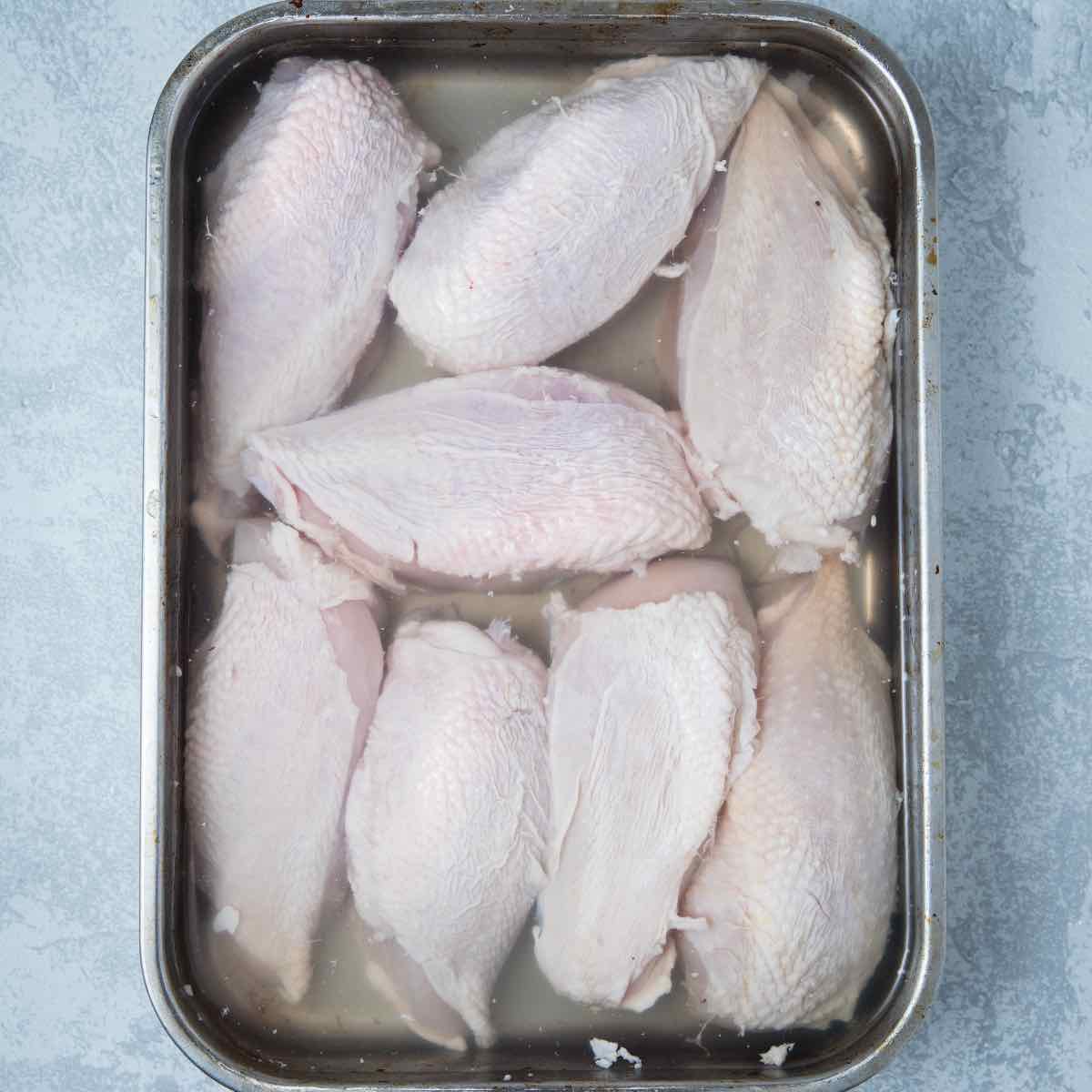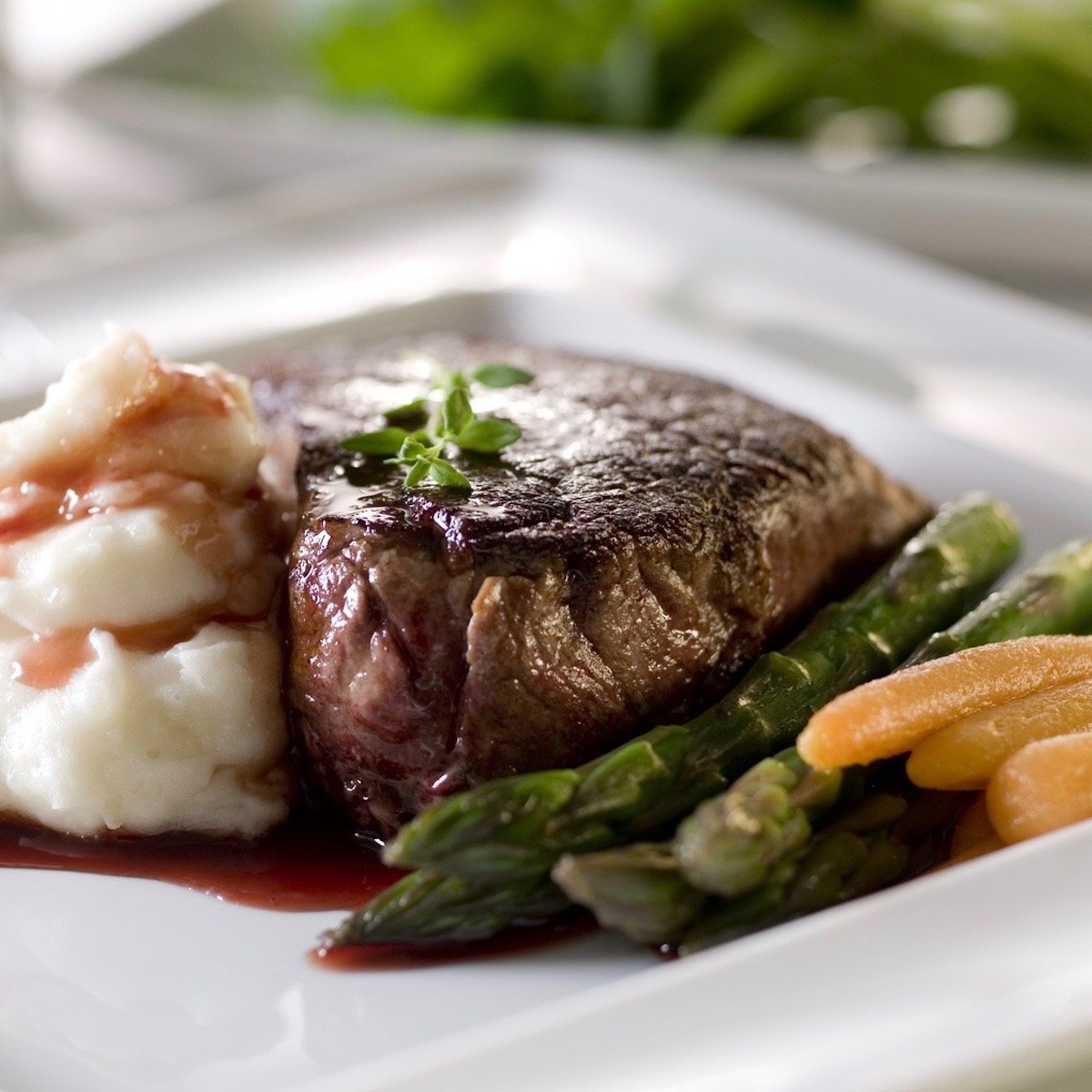Why Brine Before Cooking
Brining involves soaking food—usually meat or poultry—in a mixture of water, salt, sugar, and various herbs and spices. This simple yet effective technique enhances flavor, tenderness, and moisture retention, producing juicier, more flavorful dishes.
Salt in the brine draws moisture into the meat through osmosis, breaking down proteins and keeping the meat succulent during cooking. Adding sugar and seasonings deepens the flavor, ensuring every bite is as delicious as the last.
This age-old method has regained popularity in modern kitchens for its ease and effectiveness. Whether brining a Thanksgiving turkey, juicy pork chops, or delicate seafood, this versatile technique elevates your dishes. Brining invites experimentation and inspires unique, flavorful meals.
Mastering the principles of brining allows you to achieve professional-quality results at home. In this post, we’ll explore the science behind brining, share recipes and techniques, and provide practical tips for incorporating this method into your cooking routine. Whether you’re a seasoned chef or a home cook, learning to brine will transform your culinary creations.
The Advantages of Brining Foods Before Cooking
Brining offers several benefits that enhance flavor, texture, and the overall quality of your dishes:
- Enhanced Moisture Retention: It helps meat hold moisture during cooking. The salt breaks down muscle fibers, allowing the meat to absorb more water, resulting in a juicier dish even after extended cooking times.
- Improved Flavor: A brine infused with herbs, spices, and sugar penetrates deep into the meat, delivering balanced flavor throughout, not just on the surface.
- Tenderization: Salt in the brine breaks down proteins, making meat more tender. Tough cuts benefit significantly from this process, becoming much more enjoyable.
- Even Cooking: It increases moisture content and breaks down proteins, promoting even cooking and reducing the risk of overcooking or drying out, especially for large cuts like turkey or pork loin.
- Versatility: It isn’t limited to meat. Poultry, fish, seafood, and even vegetables benefit from brining, each taking on enhanced flavors and textures.
- Improved Texture: Brined foods often contrast a crisp exterior and a tender, juicy interior, elevating the overall dining experience.
- Food Safety: It can reduce the cooking time required to reach a safe internal temperature, minimizing the risk of overcooking while ensuring food safety.
By adding brining to your cooking repertoire, you can turn ordinary dishes into extraordinary culinary delights.

Why Use Kosher Salt in Your Brines?
Cooks commonly use kosher salt in brines for several key reasons:
- Purity: Kosher salt lacks additives like iodine or anti-caking agents, often present in table salt. This ensures the brine remains free of off-flavors, allowing the natural taste of the food to shine.
- Texture and Dissolution: The coarse grains of kosher salt dissolve evenly and gradually in water, making it easier to control the brine’s salinity and ensuring consistent seasoning throughout.
- Measurement Accuracy: The larger grains of kosher salt make it easier to measure by volume and pinch precisely. Unlike table salt, which can pack densely and vary in weight, kosher salt ensures consistent results.
- Flavor: Kosher salt delivers a clean, pure saltiness without the metallic aftertaste some detect in iodized salt. This purity allows the food’s natural flavors and the brine’s ingredients to stand out.
- Tradition: Originally used for koshering meat by drawing out blood, kosher salt has deep roots in culinary practice. Its continued use reflects both tradition and its proven advantages in modern cooking.
Using kosher salt in brines enhances food’s flavor and texture while providing consistent, reliable results, making it a favorite among chefs and home cooks.
Foods That Benefit from Brining
Brining infuses foods with moisture and flavor, transforming their texture and taste. Here are popular choices for brining:
- Poultry: Brine chicken and turkey to keep them moist and flavorful, particularly when roasting or grilling.
- Pork: Brine pork chops, loin, or shoulder to boost juiciness and amplify the meat’s natural flavors.
- Seafood: Shrimp, fish (like salmon, cod, or tilapia), and shellfish benefit from brining, which enhances texture and imparts subtle flavor. Use shorter brining times for seafood.
- Beef: While less common, cuts like brisket or flank steak become more tender and flavorful with brining.
- Vegetables: Cucumbers, carrots, and green beans turn into flavorful pickles when brined, offering a tangy, crunchy bite.
- Tofu: Brine tofu to infuse it with flavor and improve its texture, making it a versatile option for vegetarian dishes.
- Cheese: Soft cheeses, like mozzarella, can be brined to heighten flavor and extend shelf life.
Customize your brine with herbs, spices, and aromatics to complement each ingredient. This versatile technique adds depth to traditional and modern recipes, making it an essential tool in any kitchen.
All Purpose Basic Brine Recipe
Ingredients
- 2 quarts water
- ½ cup kosher salt or other coarse-grain salt
- ½ cup firmly packed light or dark brown sugar
Instructions
- Add the water, salt, and brown sugar to a large pan over medium-high heat. Stir to combine. Bring the mixture to a boil, stirring to dissolve the sugar and salt. Remove from heat and let the liquid cook down to room temperature.
- After the liquid cools down, I put the brine into one of those plastic containers with a tight-fitting lid and refrigerated it to 40°F. You want the meat and the brine to be close to the same temperature while brining. This helps with the infusion of flavor.
- Add your meat or poultry to the container and brine together in the refrigerator for the allotted time. Simple. You just have to plan to do it beforehand.
Some of My Favorite Cooking Techniques














11 Responses
I’m sure the book probably covers this, but I like putting spices in my brines. For pork (and I usually do whole tenderloins,) we favor a sweet brine (apple cider vinegar, honey, and sliced ginger in addition to the salt & brown sugar.) My family enjoys lots of hot dishes, so I’ve also added minced scotch bonnet peppers to a more basic brine (although I still use cider vinegar) and find that the heat, though subtle, permeates nicely and ups the ante on dishes that are made with other, external sources of hotness!
Of course, the real test of this book is going to be his barbecue rub. 😉
I gave this brine recipe a try, and my Chicken turned out amazingly moist… i think i would lessen the salt in the mixture a little, because my meat did end up tasting a little too salty.
I can’t see why you’d want to brine fish. If you’re cooking your fish to the point where you might consider brining it the next time then you’re simply cooking your fish too long.
Well, Just add some crushed garlic to the basic….. and the sky is the limit…yummmmmyyyy
Sorry, but I found the brining of pork chops to be underwhelming. I followed the directions exactly, including the salt adjustments for kind of salt. The result was very disappointing. The chops tasted watery and salty. The problem, I believe, is a confusion about what constitutes “moistness”. Moistness comes from fat, not from water. The same is true of turkey. I can cook a turkey that is moist and flavorful and rivals anything brined by simply browning the breast at higher heat at the beginning and cooking at low heat with the breast down for the remainder of the time. Pork chops are also easy to cook so they are not dry but still flavorful without brining. I do not understand any need for brining for anything.
Hi Tom, thanks for your comments. The first time I brined a pork loin I had the same problem. It was way too salty for my tastes. I asked a professional chef friend and he asked me if I rinsed the brine off before cooking which I didn’t. Next time the pork was delicious. I’m not sure I agree that “moistness comes from fat”. I think it has more to do with not overcooking. You can cook a chicken breast or pork tenderloin with very little fat that is wonderfully moist if done properly. I will do a little research and write a post on why some experts say brining is a good method for keeping foods moist and adding flavor. – RG
I will be interested in what you find out. I think it is important to keep separate the various ideas. They seem at least to be tough-tender, dry-moist, flavorful-not flavorful. If I marinate a pork loin in a simple combination of soy sauce, olive oil, lemon juice, and garlic I get a grilled loin that is tender, “moist”, and flavorful. I agree that the salt in the soy sauce is important, but probably more for tenderness than anything else. The salt in brining would have the same effect but unfortunately brine also creates wateryness. I am not sure where that falls within my distinctions but I know it is not a good consequence and has nothing to do with rinsing the meat. I also know that when I brown a turkey breast and then cook the bird upside down for most of the cooking time I get white meat that is tender and tasty. It may be a mistake to also call it it moist as that may be the same as watery. But I am not sure. Just trying to figure things out as best I can.
A great brine recipe can be found at epicurious. The name of the recipe is “Honey Brined Turkey with Giblet Cream Gravy.” I have used this brine recipe every year since it came out in the magazine (Nov. ’99) and it is foolproof and fantastic. We have cooked the turkey both in the oven and on the rotisserie and it’s perfect every time. I line an Igloo Playmate Cooler with a garbage bag, mix the brine and add the turkey as the directions say. We have an extra fridge in the pantry, so we’ve got plenty of room. One year at a relative’s house (who doesn’t have an extra fridge) it was in the 30s overnight so we just left the turkey on the back porch!!
Hi Lisa, thanks for the tip and recipe suggestion. I have always been a fan of brining turkey as well as pork chops and chicken but I just listened to Harold McGee on NPR yesterday and will be writing about it today. He is not a fan of brining because although it makes the turkey moister, it also makes it saltier, especially the gravy. Have you found this to be true?
I am very sensitive to saltiness, and I find the meat to be seasoned perfectly. I can’t vouch for the drippings, however. We usually cook our turkey on a rotisserie and most of the juice evaporates in the catch pan, so I just use chicken stock for my gravy. The above mentioned brine recipe is only 1 part salt to 4 parts water and most of the brining recipes I see use 1 part salt to 2 parts water. Everyone who dines with us on T’giving always wants “our” turkey recipe!!
Hi Lisa, thank you for your comments. Everyone has their own way of preparing the bird on Thanksgiving and I think that is great. I would love to try a rotisserie some time for my turkey. Happy Thanksgiving